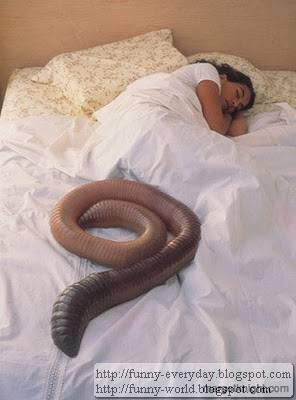 The giant Gippsland earthworm, Megascolides australis, is one of Australia's 1,000 native earthworm species. These Giant earthworms average at 100 cm long and 2 cm in diameter and can reach 3 m in length. They have a dark purple head and a blue-grey body.
The giant Gippsland earthworm, Megascolides australis, is one of Australia's 1,000 native earthworm species. These Giant earthworms average at 100 cm long and 2 cm in diameter and can reach 3 m in length. They have a dark purple head and a blue-grey body.
They live in the subsoil of blue, grey or red clay soils along stream banks and some south or west facing hills of their remaining habitat which is in Gippsland in Victoria, Australia.
These worms live in deep burrow systems and require water in their environment to respirate. These worms rarely leave their moist burrows. They have relatively long life spans for invertebrates and can take 5 years to reach maturity. They breed in the warmer months and produce large egg cocoons which are laid in their burrows. When these worms hatch in 12 months they are already 20 cm long.
They can sometimes be heard in their habitat making gurgling sounds as they move underground.
Located near the town of Bass is the Giant Earthworm Museum. This building allows tourists to crawl through a magnified replica of a worm burrow and a simulated worm's stomach. Displays and educational material on the Giant Gippsland earthworm and other natural history of Gippsland are featured.
As with many of Australia’s native species, European colonisation has resulted in the decline of the Giant Gippsland earthworm and they are now a protected species.

Large cattle often feed on this worm, although they rarely surface. Also, some farmers in the area have stopped raising cattle and have begun planting crops. When the farmers till the ground many of the worms are severed, and some scientists believe that worms are killed as a result of the tilling. Thus, the giant earthworm is in danger of becoming extinct. (wiki)




No comments:
Post a Comment